Charbagh Garden
The meticulously designed Persian-style garden divided into four sections by water channels, symbolizing the four rivers of Paradise.
Read More
Humayun's Tomb, located in Delhi, is a magnificent example of early Mughal architecture and a UNESCO World Heritage site. Commissioned in 1569–70 by Empress Bega Begum in memory of her husband, Emperor Humayun, it was the first grand mausoleum of the Mughal era in India. Designed by Persian architect Mirak Mirza Ghiyas, the tomb features a stunning fusion of Persian and Indian styles, with red sandstone and white marble creating striking contrasts. Its symmetrical layout, elevated platform, arched alcoves, and intricate ornamentation set a new standard in Indo-Islamic architecture. The surrounding Charbagh (four-part) garden is one of the earliest examples in the subcontinent, reflecting the concept of paradise in Islamic tradition. Humayun's Tomb not only served as an architectural precursor to the Taj Mahal but also represents a turning point in the cultural and artistic history of Mughal India.



The meticulously designed Persian-style garden divided into four sections by water channels, symbolizing the four rivers of Paradise.
Read More
An octagonal tomb predating Humayun's by two decades, offering a glimpse into pre-Mughal architecture within the same complex.
Read More
The striking "Blue Dome" tomb showcasing unique blue-glazed tiles, recently restored and reintegrated into the complex.
Read More
The grand gateway and remnants of the caravanserai built to house the Persian craftsmen who worked on the main tomb.
Read MoreA visit to Humayun's Tomb offers a rich and serene experience for history and architecture lovers. Wander through the beautifully laid out Charbagh gardens, with their geometric precision and calming atmosphere. Capture the monument’s changing beauty as sunlight shifts throughout the day, offering perfect photo opportunities from various angles. Marvel at the intricate ceiling designs and Mughal craftsmanship within the tomb. Join a guided tour to learn about the site's rich history and architectural innovations. Take a quiet moment to meditate in the peaceful surroundings and appreciate the sophisticated 16th-century water channels and fountains that reflect Mughal engineering brilliance.

Shopping at Humayun’s Tomb is limited to a small souvenir shop within the complex, offering basic mementos. For a more enriching experience, explore the nearby Nizamuddin market, known for its Islamic calligraphy, prayer rugs, and spiritual literature. Sundernagar Market, a short drive away, is perfect for antique lovers and art collectors. For upscale shopping, Khan Market—just 3 km from the tomb—offers a wide selection of quality handicrafts, books, textiles, and boutique clothing from across India.
Dining near Humayun’s Tomb offers a flavorful journey through Delhi’s rich culinary scene. The nearby Nizamuddin area is known for authentic Mughlai delights at legendary spots like Karim’s and Ghalib Kebab Corner. For a more upscale experience, restaurants like Lavaash by Saby and Tres, located within 3 km, serve refined global and regional cuisine. While the area isn’t known for a vibrant nightlife, evening visitors should use trusted transportation, stay in well-lit areas, and avoid wandering into isolated places after dark.
Humayun’s Tomb is easily accessible via public and private transportation. The nearest metro station is JLN Stadium (Violet Line), just a short auto-rickshaw or walk away. Taxis, auto-rickshaws, and app-based cabs are readily available in the area. The complex is generally safe during the day, with security personnel present. Visitors should stay alert, especially in less crowded areas, and avoid visiting after dark. Carrying bottled water, wearing comfortable footwear, and keeping belongings secure is recommended for a hassle-free visit.


